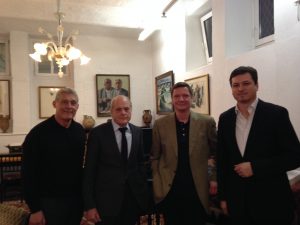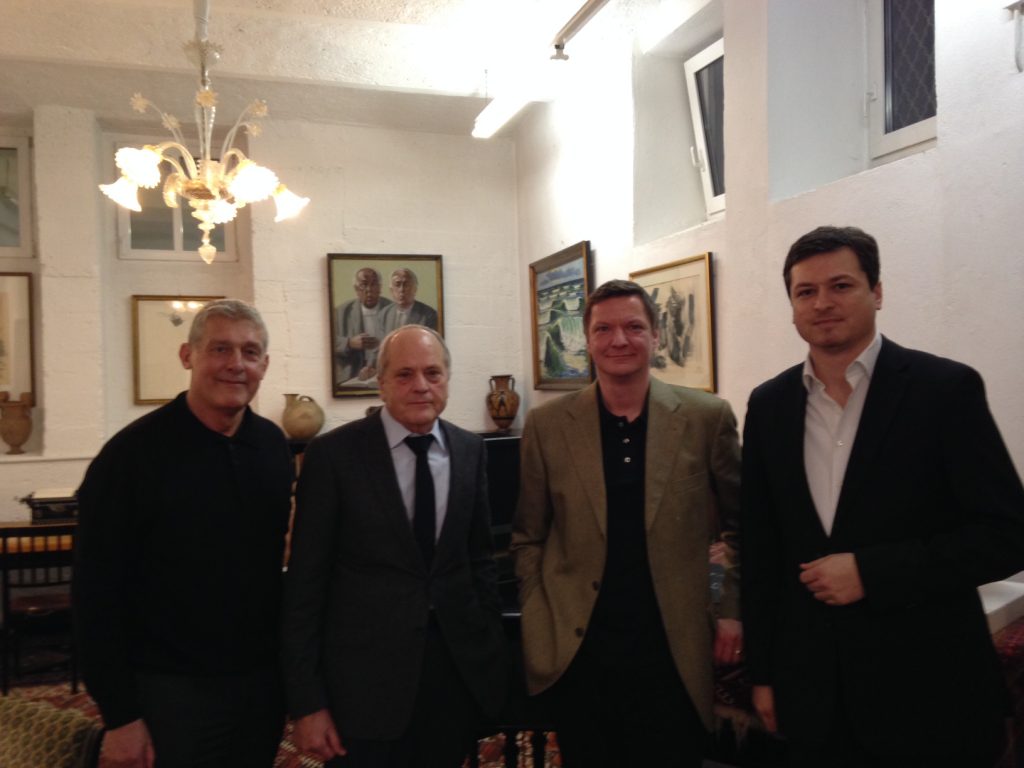PRESS RELEASE (originally in German)
Munich (February 6, 2015)
The General Assembly of the Karl-Amadeus-Hartmann-Gesellschaft e. V. elected a new Board of Directors on December 16, 2014. Under the chairmanship of the confirmed managing director Andreas Hérm Baumgartner (conductor, artistic director), the conductor Christoph Poppen was elected president. Appointed to the board were the musicologist Prof. Dr. Wolfgang Rathert (LMU-Munich) as deputy managing director, the lawyer Andreas Ammersbach as treasurer and the musicologist Thomas Schulz as secretary/media director.
The members of the Karl Amadeus Hartmann Society include not only music lovers and scholars, but above all personalities from national and international cultural life, including Helmut Lachenmann, Wolfgang Rihm, Jörg Widmann, Udo Zimmermann, Friedrich Cerha, Fabio Luisi, Ingo Metzmacher, Marek Janowski, Kurt Masur, Thomas Zehetmair, Ingolf Turban, Siegfried Mauser and Reinhold Kreile.
The central task of the Karl Amadeus Hartmann Society is to promote the dissemination and understanding of the composer’s works and to be a forum for his person and his work. This is done on the one hand by collecting and archiving material from and about Hartmann, by making his work and biography scientifically accessible, and by making the archive material available to performers, scholars and interested parties. Not only are scientific papers and publications supervised and edited, but also new ways of teaching are taken, e. g. through advanced training for prospective music teachers, cooperation with schools and lively education projects that challenge the creativity of the students.
On the other hand, the Hartmann Society also sees itself as a source of inspiration for national and international performances and as an intermediary and connecting link between the management levels of the orchestras/festivals and the performers. It appears both as organizer and co-organizer of concerts, lectures, symposia and exhibitions, nationally and internationally. Especially the international festival “Karl-Amadeus-Hartmann Year 2013” (seasons 2012/13 and 2013/14), for which Andreas Hérm Baumgartner was responsible as Artistic Director and which has attracted attention everywhere, succeeded in paying tribute to the most important German-speaking symphonist of the 20th century and founder of the musica viva concert series of the Bavarian Radio on the 50th anniversary of his death. The festival gave new impulses in the examination of the composer’s œuvre with more than 140 concerts, exhibitions, panel discussions and symposia worldwide. Artistically high-ranking orchestras and interpreters of world class could be involved: The London Philharmonic Orchestra, Symphonieorchester des Bayerischen Rundfunks, Orchestre de Paris, Philharmonia Zürich, Rundfunkorchester Berlin, American Symphony Orchestra, BBC Symphony Orchestra, Netherlands Radio Philharmonic Orchestra as well as Patricia Kopatchinskaja, Isabelle Faust, Thomas Zehetmair, Reto Bieri, Matthias Goerne, Juliane Banse, Kent Nagano, Fabio Luisi, Markus Stenz, Ingo Metzmacher, James Gaffigan and Vladimir Jurowski are just a few examples.
The field of activity of the Hartmann Society is completed by exhibitions that are not only dedicated to aspects of Karl Amadeus Hartmann’s life and work, but also feel particularly committed to the intellectual, artistic, social and socio-political heritage of the composer. The current special exhibition „In Liebe …. auf ewig?“ [“In love … forever?”] is based on the correspondence of the married couple Elisabeth and Karl Amadeus Hartmann and covers the period from 1931 to 1945, i. e. precisely the years that have had such a decisive influence on Hartmann’s life and musical language. This correspondence describes intensely and relentlessly how a young artist fared during this time resisting the seductions of the Nazi regime and offering opposition in many ways. A tour of the permanent and the special exhibition is possible by appointment from Tuesday to Thursday (10 to 12 AM and 2 to 5 PM).
Contact:
Karl-Amadeus-Hartmann-Gesellschaft e.V.
Franz-Joseph-Straße 20
D-80801 Munich
Tel.: +49 (0)89 34 79 67
Fax: +49 (0) 3212 1357 315
E-mail: info@hartmann-gesellschaft.de


